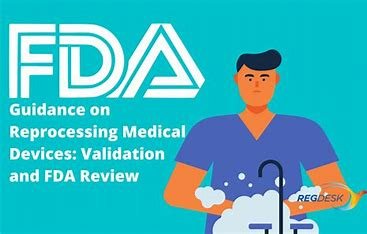Learn about the FDA’s 21 CFR Part 211 requirements for reprocessing in pharmaceutical manufacturing. Discover the importance of quality control, written procedures, and corrective actions in ensuring product integrity.
Quality standards and regulations that contribute to the safe, efficacious production of finished pharmaceuticals rely on a robust framework set forth in myriad guidelines and protocols. Among the most important regulations is 21 CFR Part 211, issued by the FDA (Food and Drug Administration), which sets out Current Good Manufacturing Practice (cGMP) for Finished Pharmaceuticals.
Patient safety and product-quality concerns rule the day in an industry that is highly regulated, so pharmaceutical manufacturers must have a good working knowledge of reprocessing requirements found in 21 CFR Part 211. More than a legal requirement, it is also an ethical responsibility to comply with these regulations.
Overview of FDA Reprocessing Regulations
Paragon of 21CFR Part 211: Inside the wide open structure of 21 CFR Part 211, Subpart F will tackle the focal point on production as well as control processes. The focus is on an essential part of pharma manufacturing which is Reprocessing. Reprocessing is the practice of subjecting final product (finished pharmaceuticals) that does not conform to standards or specifications, after release by Quality Control, to the described procedures so that it may eventually meet all quality standards, all its technical requirements and desired characteristics. In this way, manufacturers can attempt to salvage and correct out-of-spec batches, minimizing waste and keeping the overall quality of product intact.
In addition, 21 CFR Part 211 details the importance of the quality control unit in reprocessing activities. Procedures should be reviewed and approved by the quality control unit before reprocessing can begin. This is critical to confirm the reprocessed batches comply with all requested standards and requirements. Quality Control Unit acts as a safety net ensuring proper process definitions and all needs checks and balances are in place.
Through compliance with the standards established in 21 CFR Part 211, pharmaceutical manufacturers can show they genuinely do care about creating quality products which meet GMP regulations. By reprocessing non-conforming batches carefully, these manufacturers can prevent waste, eliminate risk and ensure pharmaceutical products are good for public use.
Reprocessing and Why It Matters: Reprocessing is the act of introducing non-conformant lots of finished pharmaceutical products through defined processes so that they eventually meet requisite standards, specifications, and attributes. Reprocessing is a solution to rectify and recover batches that are outside the established specifications of quality, thus reducing waste and ensuring that product integrity remains intact.
Written Procedures and Standard Operating Procedures (SOPs)
Written Procedures/SOP (System Establishment): Systems shall be established and all components of these systems shall be operated in a manner consistent with their design. This includes procedures which are written by the pharmaceutical manufacturer and followed as per 21 CFR Part 211. These processes should describe a structured process to manage non-conforming batches, that leads to finally ensure the reprocessed batches meet all established standards, specifications and characteristics. The written reprocessing procedures should be detailed enough to fully explain the reprocessing step by step, so personnel responsible for performing these activities have a precise guideline.
The Role of the Quality Control Unit in Reprocessing
A key thing that is brought to light in 21 CFR Part 211.115(b) the need to get a review and approval from its quality control unit before reprocessing activities are performed. The Quality control unit is a part of the manufacturing process which plays very crucial role in making sure that pharmaceutical products comply with the overall quality. Thereby their involvement contributes to the robustness and safety of reprocessed batches, ensuring that proper procedures are followed, and adequate checks and balances implemented.
Key Components of Effective Reprocessing Procedures
Written Procedures: Written procedures to include instructions for reprocessing, including what to do with nonconforming batches and how they are processed through to conformance.
Detailed Analysis: Before any unpacking begins, conduct a thorough analysis in order to identify the root cause of non-conformity. Such an analysis should include quality control data, laboratory analyses and any other pertinent information.
The Corrective Action: Issue proper corrective actions depending on the results of the investigation. Your actions should remedy the root cause you identified and should prevent re-occurrence.
Documentation: Document everything in the reprocessing cycle in detail. Record each step, observation and decision during the reprocessing to provide an integrated audit trail of what was done.
Ensure that a quality control review is conducted by the appropriate unit before starting reprocessing. It is important, and necessary to achieve the desired standard of product for reprocessed batches but requires their expertise and oversight.
Conclusion
Pharmaceutical manufacturing would quite simply not be possible without reprocessing as it is the ability to take non-conforming batches and bring them into compliance with established standards and specifications. Maintenance of the reprocessed pharmaceutical products is done in compliance with the provisions prescribed under 21 CFR Part 211. Pharma companies that implement the correct steps detailed in these regulations demonstrate their pledge to cGMP compliance and determine safe and effective products for consumers.
Contact BioBoston Consulting today and visit our website to find out how we can help your company.


